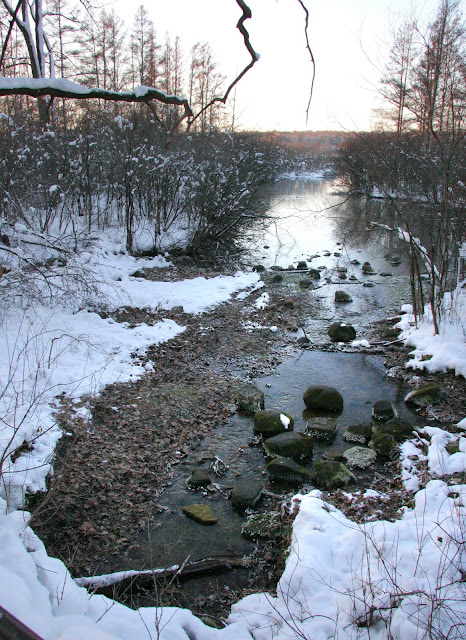"Grey" infrastructure
"Green" infrastructure
On April 22, 1970, the modern environmental movement came of age with celebration of the first Earth Day, when 22 million Americans participated. This event was the brainchild of Wisconsin’s senator Gaylord Nelson. Back then, Madison was a leader.
Soon after, NIMBY became the rallying call--“Not In My Back Yard.” People fought the construction of power plants and garbage dumps in their neighborhoods, often with success. While this was better than keeping quiet to allow destruction of neighborhoods--which earlier had been the norm--there was a distinct whiff of selfishness. It was OK to participate in the throwaway culture--as long as the garbage dump was put somewhere else… in poor neighborhoods, where people wouldn’t complain.
Now neighbors of the Hillcrest-Upland Greenway are crying “Not in My Back Yard“… creating a big headache for public officials. But are they traditional, selfish NIMBYs? I don’t think so.
We need these NIMBYs… they’re a little different. So let’s call them GIMBYs, for Green in My Back Yard.
Not so selfish
What’s different about GIMBYs is that neighbors want something positive. They are saying to the city: “We had a great backyard--a green and wild ravine--and now we want to make it even better. You can’t destroy this gem with tons of riprap rubble, and we don’t want you to destroy any other places like this in Madison.”
But the kind of “green infrastructure” needed in the ravine isn’t easy. If it were, we’d already have restored streams, rain gardens everywhere, and parking ramps with sod roofs. Green infrastructure requires new ways of thinking, new habits, and probably a bit more maintenance.
More maintenance?
For example, let’s consider the new terrace rain gardens recently installed near West High. Since they are planted with flowers, they may take a bit more care than just running a lawn mower over your grass.
Maintenance needed: rain garden intakes, were water flows from the gutter to the garden, need to be kept clear.
Yet look at the chores we already accept. Shoveling snow nearly every day. Mowing the lawn once a week. Rolling out the garbage. Many of these chores can be farmed out to 21st century business. Already we have a local company manufacturing rain barrels. ChemLawn will morph into the “Rain Man.” A guy in India can’t install your rain barrel.
The green infrastructure is going to take a little more know-how, at least at first. Right now, people don’t know exactly what to do--or what to plant in the rain garden. Neighbors can show neighbors how--or you can hire an expert to design your rain garden.
Stepping up to the plate
So if “green” takes a little more maintenance, and a little more know-how, we’ve all got to do our part. Neighbors need to do more than just whine “not in my back yard.” They need to step forward, as they have done so far, to show what they are willing to do. Neighbors should help with sediment removal, minor erosion control, planting, and invasive species control in the restored ravine.
Likewise, the City needs to seize this opportunity to experiment with new ways of handling storm water. The City needs to understand that a little ongoing maintenance of the greenway will be needed. Neglect of that maintenance is what led to erosion that is threatening the sewer today. If the City can patch a street, they can patch a greenway. The City needs to be willing to spend more than just the minimum on this greenway, because it’s the opening shot in the battle for a green future.
With green infrastructure, every location is unique. Here the rain flows one way. There, it goes a different way. That makes it harder for planners and engineers. They need to be willing to work with residents to find local solutions--green solutions. Neighborhoods willing to test new ideas are needed. That’s what our greenway issue is about.
Here we have an ideal situation. The neighbors are aroused! They want to work with the city in a positive way, to find new ways of solving old problems. Let’s hope the City is up to the challenge--and willing to invest more time, energy, and money into our greenway. Let’s make it the best possible example… for the future.
* * *
Photo captions
Top left: The burial of Westmarland stream--the old way of handling stormwater.
Top right: Stormwater channel in median of Cherokee Drive.
Photos by David Thompson
Photos by David Thompson









































